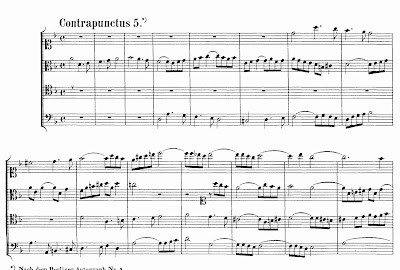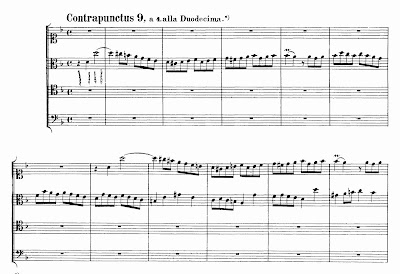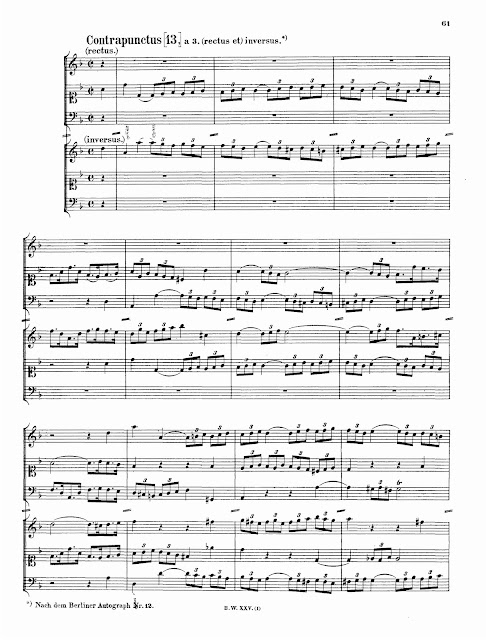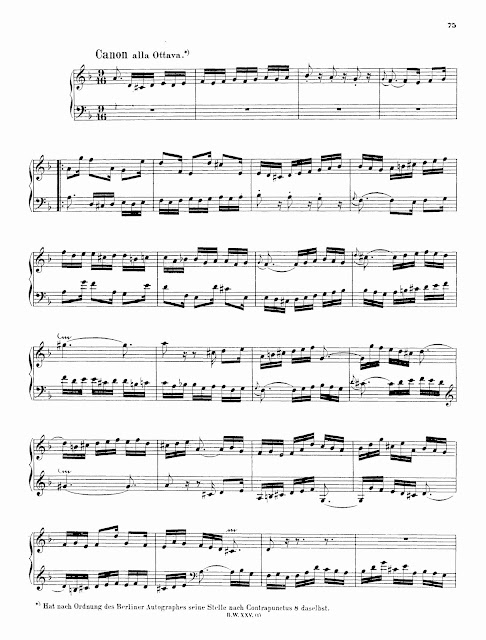DCLXXXIV. BACH, J.S. (1685-1750)
Two Versions
2. Gustav Leonhardt, harpsichord
(1:20:42)
The Art of the Fugue is an incomplete work of unspecified instrumentation.
Sato:
"I wanted to bring out the many colours of the work and of my ensemble. Every fugue has its own character. On the basis of the rhythm, time and chromatic lines, etc, you can determine which instrument is most suitable. I've studied each part very carefully, in order to decide which instruments are best to use. I wanted the whole Netherlands Bach Society to be heard, so the singers are taking part as well. They sing without words, to vowel sounds. When you introduce singers to The Art of the Fugue, you can hardly ignore the example of the Swingle Singers. The sung Contrapunctus 9 is intended as a tribute to their great recording."
Leonhardt, who argues that The Art of the Fugue was intended to be played on a keyboard instrument -- specifically the harpsichord:
"1. It was common practice in the 17th and early 18th centuries to publish keyboard pieces in open score, especially those that are contrapuntally complex.
2. The range of none of the ensemble or orchestral instruments of the period corresponds to any of the ranges of the voices in The Art of the Fugue. Furthermore, none of the melodic shapes that characterize Bach's ensemble writing are found in the work, and there is no basso continuo.
3. The fugue types used are reminiscent of the types in The Well-Tempered Clavier, rather than Bach's ensemble fugues.
4. Finally, since the bass voice in The Art of the Fugue occasionally rises above the tenor, and the tenor becomes the 'real' bass, I deduce that the bass part was not meant to be doubled at 16-foot pitch, thus eliminating the pipe organ as the intended instrument, leaving the harpsichord as the most logical choice."
2. The range of none of the ensemble or orchestral instruments of the period corresponds to any of the ranges of the voices in The Art of the Fugue. Furthermore, none of the melodic shapes that characterize Bach's ensemble writing are found in the work, and there is no basso continuo.
3. The fugue types used are reminiscent of the types in The Well-Tempered Clavier, rather than Bach's ensemble fugues.
4. Finally, since the bass voice in The Art of the Fugue occasionally rises above the tenor, and the tenor becomes the 'real' bass, I deduce that the bass part was not meant to be doubled at 16-foot pitch, thus eliminating the pipe organ as the intended instrument, leaving the harpsichord as the most logical choice."
1. Contrapunctus 1
The subject -- in D minor -- is just four bars in length. This is a four-voice fugue:
The subject -- in D minor -- is just four bars in length. This is a four-voice fugue:
Four-voice fugue with a "French" style dotted rhythm:
Four-voice fugue in inversion, with intense chromaticism:
In inversion, employing countersubjects:
Suprious inclusion.
6. Contrapunctus 5
Stretto-fugues (counter-fugues), in which the subject is used simultaneously in regular, inverted, augmented, and diminished forms:
In Stylo Francese -- Bach adds both forms of the theme in diminution (halving the note lengths), with little rising and descending clusters of 16th-notes in one voice answered or punctuated by similar groups of 32nd-notes in another, against sustained notes in the accompanying voices. The dotted rhythm, enhanced by these little rising and descending groups, suggests what is called "French style" in Bach's day, hence the name Stylo Francese.
Augmented and diminished versions of the subject and its inversion.
Spurious inclusion.
10. Contrapunctus 8
Triple fugue with three subjects:
alla Duodecima: a double fugue with two subjects occurring dependently and in invertible counterpoint at the twelfth.
12. Contrapunctus 10
alla Decima: double fugue, with two subjects occurring dependently and in invertible counterpoint at the tenth.
A triple fugue, employing the three subjects of Contrapunctus 8 in inversion.
15. Contrapunctus inversus a 4 (forma inversa)
Amazing mirror fugues!
Four-voice fugue with the voices and counterpoint completely inverted, without violating contrapuntal rules or musicality:
Four-voice fugue with the voices and counterpoint completely inverted, without violating contrapuntal rules or musicality:
Three-voice mirror fugue:
18. Contrapunctus a 3 (forma inversa)
19. Chorale
20. Canon alla Ottava
Imitation at the octave.
Imitation at the tenth.
Imitation at the twelfth.
Canon in which the following voice is both inverted and augmented!
25. Fuga a 3 soggetti (reconstruction Kees van Houten/Leo van Doeselaar)
Four-voice triple fugue (not completed by Bach, but likely to have become a quadruple fugue!)
























No comments:
Post a Comment